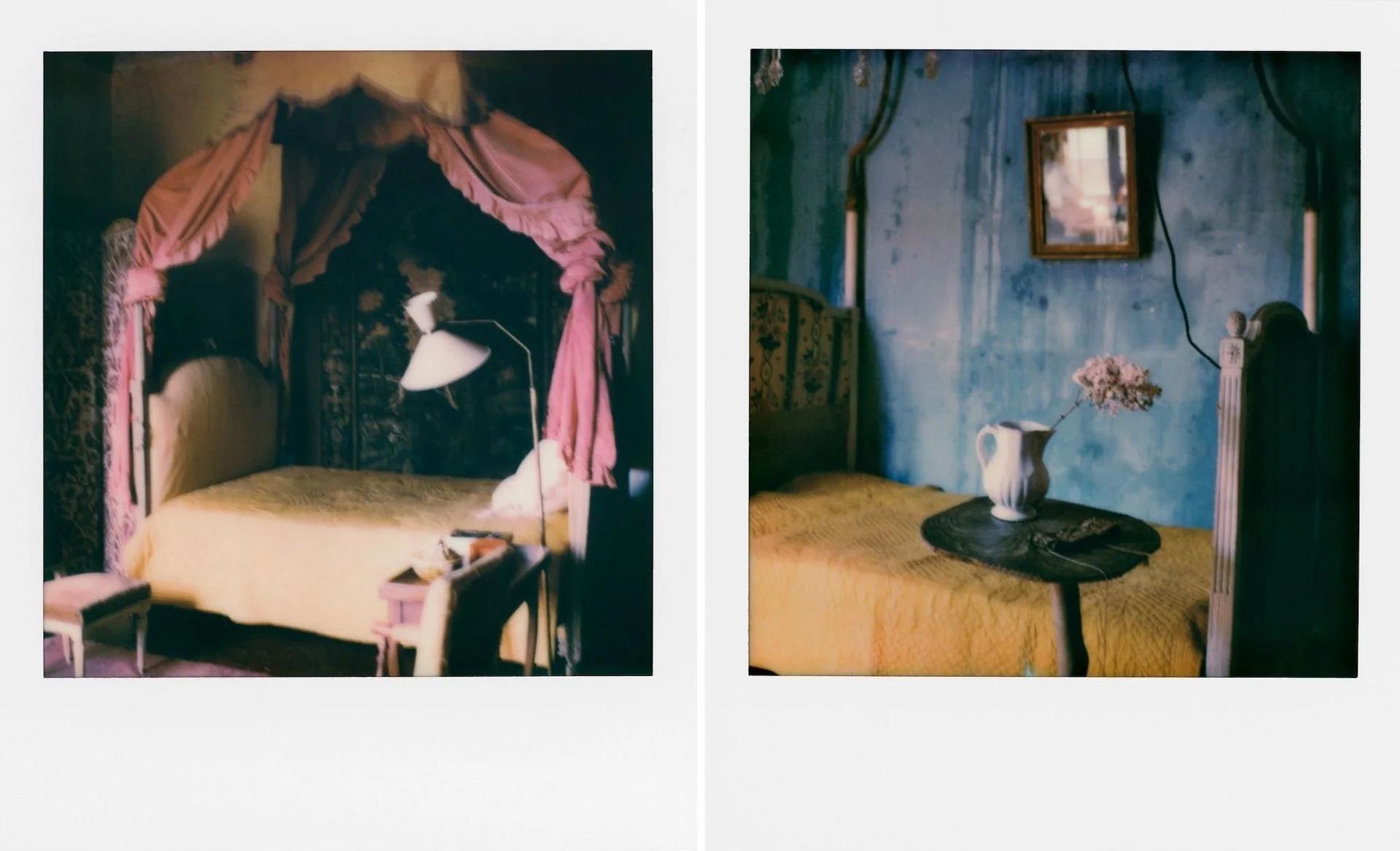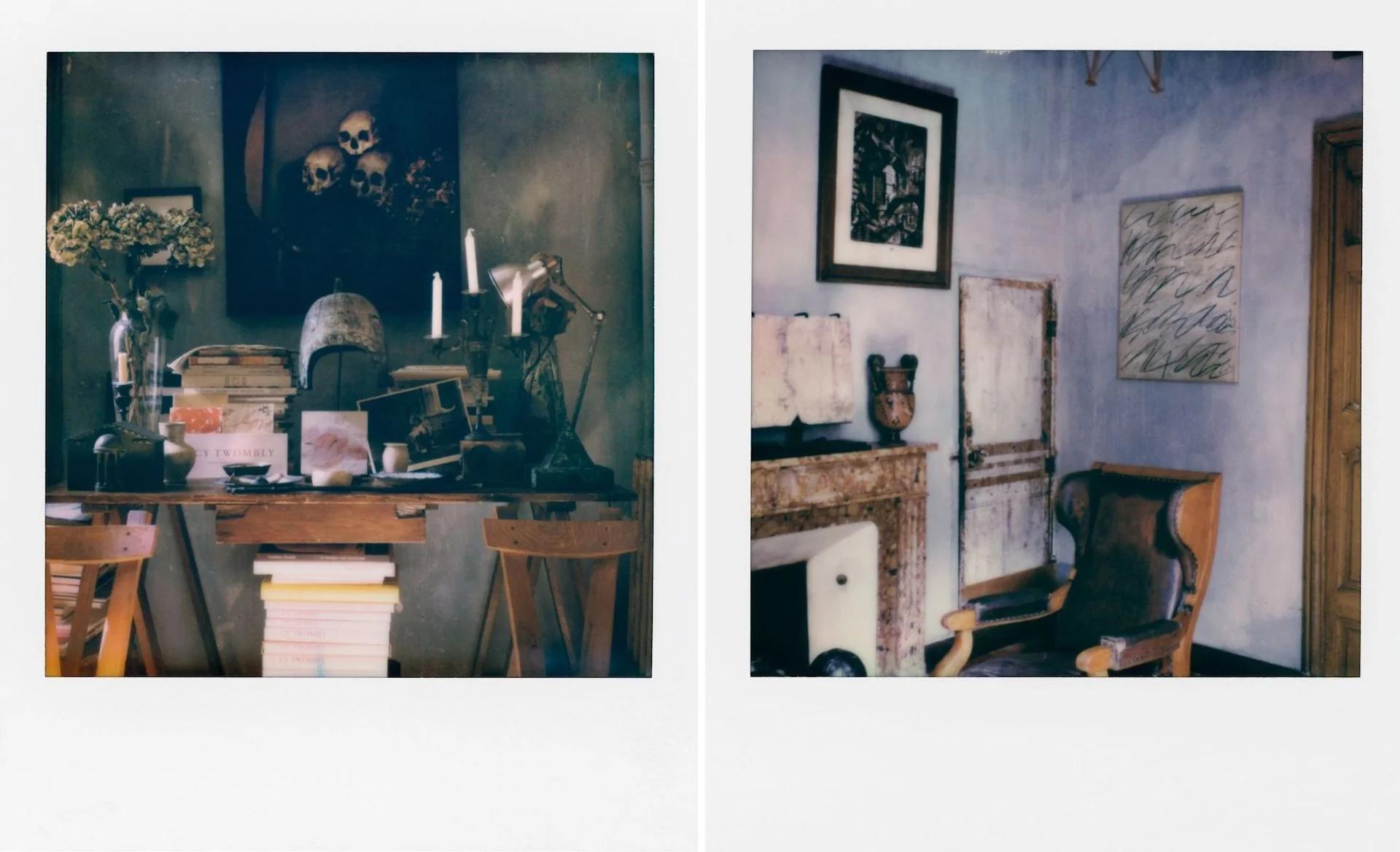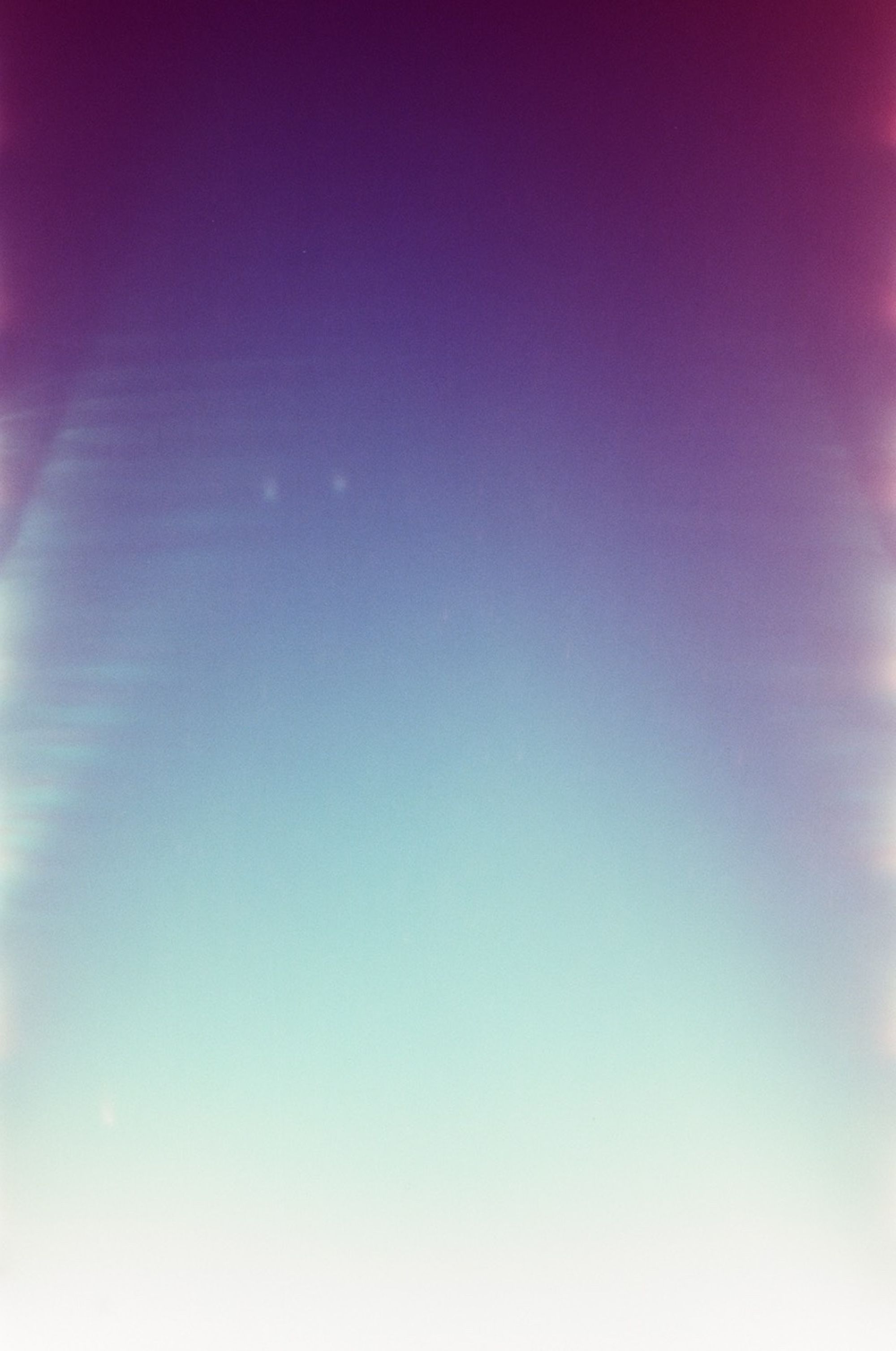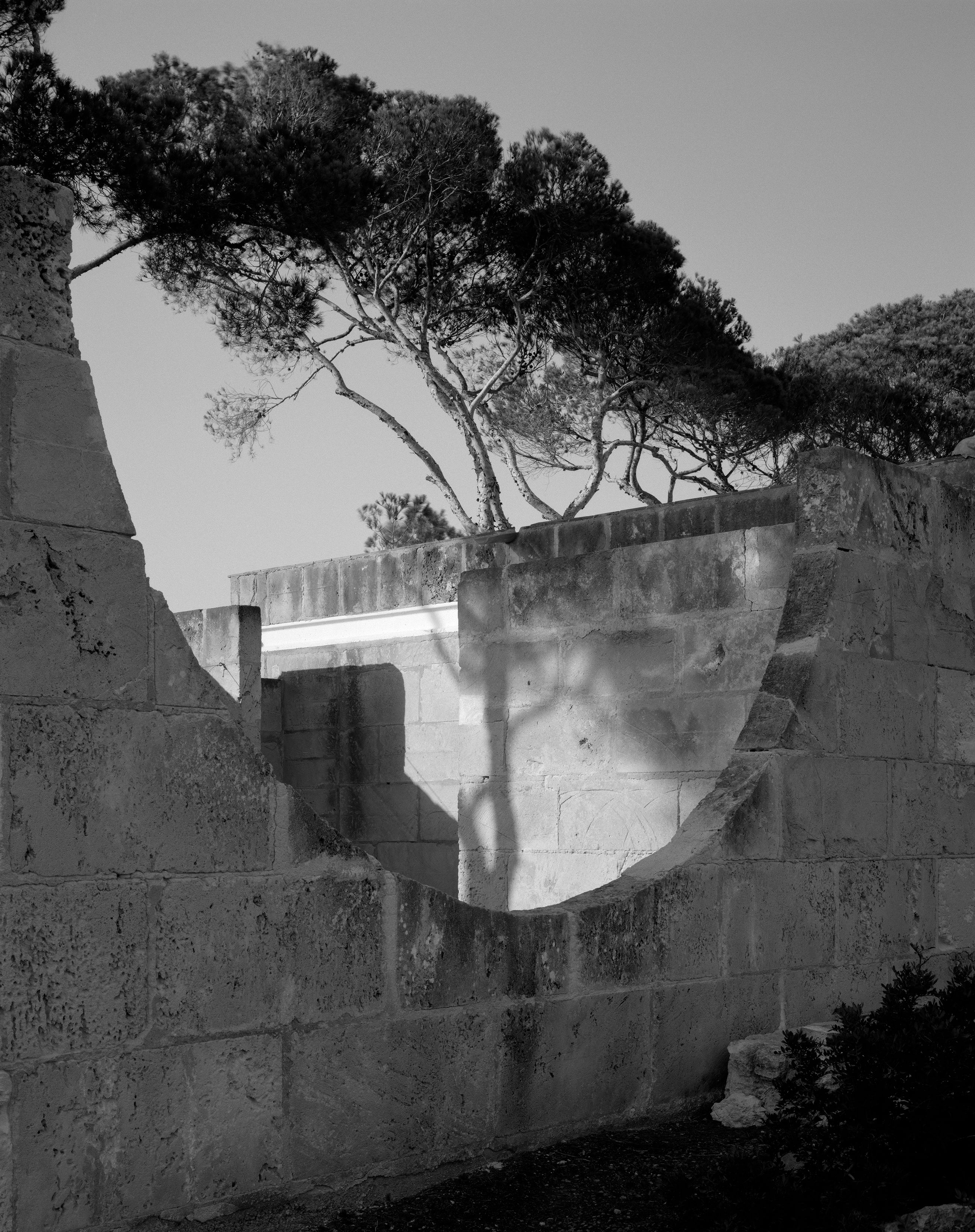BEHIND THE LENS JULY 30 2021
by Anna Carnick
Celebrated French photographer François Halard turns the camera in on his own world, offering up an intimate diary of his time in lockdown

SELF-PORTRAIT OF THE PHOTOGRAPHER IN HIS HOME
Image © François Halard
When faced with the reality of pandemic-imposed confinement, photographer François Halard looked, quite naturally, to his camera to find his way through. Turning the lens in on his own space, Halard took daily polaroids of his beguiling home, a traditional hôtel particulier in southern France. The resulting book—56 Days in Arles, published by Libraryman—is an intimate photo diary of his time in isolation.
Halard has spent much of his acclaimed career capturing images of the homes and studios of artists and designers such as Richard Avedon, Louise Bourgeois, and Cy Twombly, to name just a few. Through objects and environments, Halard’s photographs offer up reflections of the lives and personalities who move in and around them. In turning the camera around, he presents an extension of his own story, written in photos of a beloved place and the pieces—many collected over a lifetime—within it.
We spoke with Halard about the project—and the relationships we create with the objects and spaces with which we surround ourselves.

PHOTOGRAPHS FROM 56 DAYS IN ARLES
© 2021 François Halard and Libraryman
Design Miami/Please tell us a bit about your home in Arles.
François Halard/I found my house 30 years ago. It is a traditional hôtel particulier from the 18th century. The house is very Italian, like Arles itself, which used to be called “la petite Rome.” It reminded me of artist Cy Twombly’s house in Bassano, Italy. He had a huge influence on my work. Also, when I saw the house for the first time, it brought to mind images of fashion photographer Deborah Turbeville’s hauntingly beautiful work.

PHOTOGRAPHS FROM 56 DAYS IN ARLES
© 2021 François Halard and Libraryman
DM/As art dealer Oscar Humphries observes in his wonderful foreword to the book, objects become important to us because of the stories that we attach to them. What is your approach to collecting and or living with art and objects?
FH/The objects I surround myself with are like friends and family, every one imbued with memory. I have collected them since my childhood, and they’ve followed me around for years. There’s a kind of romance, an intimate relationship that comes from surrounding yourself with beauty. It’s been a pleasure to turn them into the subject of my photography.

PHOTOGRAPHS FROM 56 DAYS IN ARLES BY FRANÇOIS HALARD. AT RIGHT, CY TWOMBLY'S ROMAN NOTES HANG ON THE WALL OF HALARD'S HOME IN ARLES
© 2021 François Halard and Libraryman
DM/Could you tell us about one or two particular objects captured in these images, and why they’re especially meaningful to you?
FH/I am very attached to the first piece of art I bought in my twenties, using my first professional paycheck, which are the Cy Twombly Roman Notes lithographs. They opened me up to the work of Cy and to the world of antiquity, myths, and modernity.
DM/Against the backdrop of the last several months—when so much has been out of our control—I imagine it was quite comforting, perhaps even cathartic, to observe a daily creative ritual, particularly one that was so self-reflective. Tell us about your decision to make this series, and what the experience of taking them was like for you.
FH/For the first time in a very long time, like everyone, I spent a remarkable amount of time in my own house. It reminded me of the time that I used to spend alone in my room during my childhood, a lonely time when I felt all I had were the objects in that room, and, eventually, a camera. I was driven by an urge to continue to photograph what was around me. Every day trying to find a new corner, a new still life, a new flower...

PHOTOGRAPHS FROM 56 DAYS IN ARLES
© 2021 François Halard and Libraryman
DM/You’ve made a career of photographing other people’s spaces, creating images that reflect on others’ personalities and lives. What was it like, turning the camera in on your own space?
FH/I think it was a dose of freedom; I was able to move my camera around without any limitation. My work is not so much about documenting, but always about translating places, sharing perspectives with people who may not have the opportunity to experience these spaces as I do. And I was just doing it for my own pleasure. The idea of doing a book came later.
DM/Why polaroids?
FH/Polaroid, because I wanted to pay homage to Cy Twombly’s photographs of his own house and studio. Also, because I do not like digital photography. For me, they are missing some depth.

PHOTOGRAPHS FROM 56 DAYS IN ARLES
© 2021 François Halard and Libraryman
DM/When you consider these images—full of art and objects you’ve collected over time, set within a place you’ve known for over 30 years, and captured in a pivotal moment—what are the biggest takeaways for you?
FH/It was a wholly unique experience, the possibility, for the first time, to focus on my own personal work. To transform my own house into my artist studio.
DM/What do you most hope others take away from these photographs?
FH/I hope they will be able to find inspiration in those intimate moments—as I have.
DM/Thank you, François! ◆
56 Days in Arles is available via Libraryman.


